Overview
This article offers valuable insights into the GERD VA rating of 30 percent for veterans. We understand that navigating this process can be challenging, and we want to help you through it. It's essential to know the criteria for qualification and the role of documentation in your application. Veterans must demonstrate specific symptoms, including:
- Recurrent epigastric distress
- Dysphagia
Thorough medical documentation is vital for a successful claim, as it significantly enhances your chances of obtaining the desired rating. Remember, you're not alone in this journey, and we're here to support you every step of the way.
Introduction
Navigating the complexities of obtaining a GERD VA rating of 30 percent can feel overwhelming for veterans. We understand the physical and emotional toll this condition can take. With the VA's evolving criteria and the intricacies of the claims process, it’s essential to grasp the key insights and strategies that can help secure the benefits you deserve.
How can you effectively articulate your symptoms and experiences to ensure your claims are not only heard but also approved? This article explores essential insights designed to empower you, the former service member, to navigate your GERD claims with confidence and clarity.
Turnout: Streamlining Your GERD VA Rating Process
Navigating the GERD VA rating 30 percent process can be overwhelming for former service members, but Turnout is here to help. By harnessing the power of AI technology, this innovative platform simplifies the application and appeals process, ensuring veterans receive timely updates and comprehensive support. We understand that gathering essential documentation and submitting claims can be stressful, and Turnout alleviates this burden by guiding users through each step.
The impact of AI on processing efficiency is remarkable. As of August 2025, the average processing time for all disability applications has decreased to 94.8 days—an impressive improvement from earlier averages. The VA has successfully processed over 2.524 million claims in fiscal year 2025, achieving a processing speed that is 17.8% faster than the previous year. This efficiency is crucial for individuals with GERD VA rating 30 percent, as they may struggle to articulate how their condition affects their daily lives.
Turnout's platform exemplifies how technology can ease the burden of government benefit applications for former military personnel. By automating routine tasks and providing real-time updates, veterans can focus on their health and well-being rather than being overwhelmed by paperwork. This support is especially vital for those who feel lost in the complexities of the VA system.
Many veterans have shared their frustrations with bureaucratic hurdles, often feeling that the system is designed to hinder rather than help. Turnout's approach not only streamlines the process but also empowers former service members to take control of their claims. You deserve to obtain the benefits you’ve earned without unnecessary delays, and we're here to support you every step of the way.
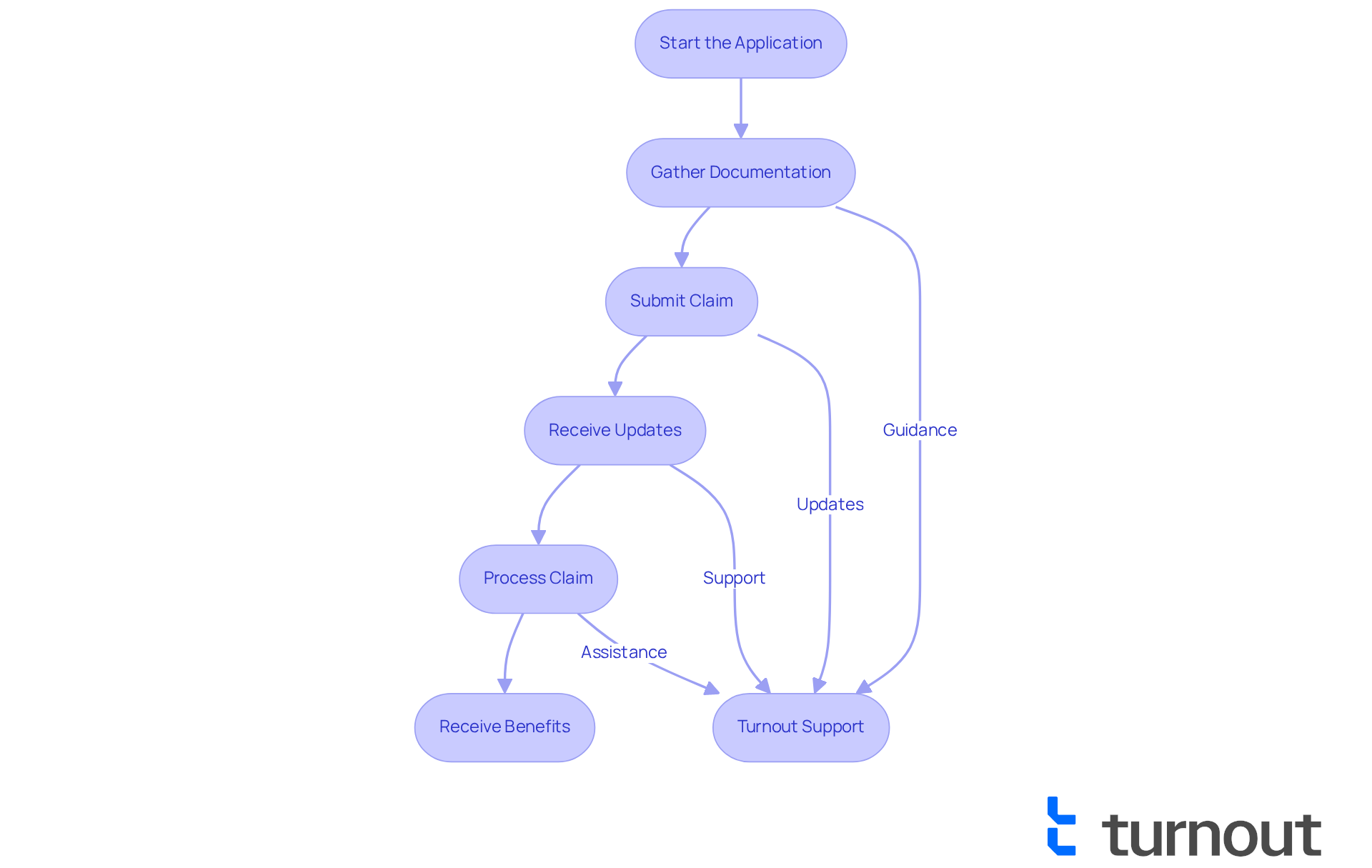
GERD VA Rating Criteria: What Qualifies for 30 Percent
To qualify for a GERD VA rating of 30 percent for a gastroesophageal reflux condition, it's important to understand the specific indications that must be displayed. These include:
- Persistently recurrent epigastric distress
- Dysphagia (difficulty swallowing)
- Pyrosis (heartburn)
We understand that navigating these requirements can be overwhelming. A 2020 study indicates that about 48% of individuals with GERD experience dysphagia, highlighting how common this issue is among former military personnel.
Additionally, having esophageal strictures that require dilation procedures no more than twice a year can further support your rating. For instance, if you have recurrent esophageal strictures leading to dysphagia, your medical records can play a crucial role in connecting these issues to your service. Grasping these standards is vital for former service members to effectively convey their symptoms and experiences in their applications, especially regarding the new GERD VA rating of 30 percent standards set to take effect on May 19, 2024.
The VA's assessment focuses on the extent of functional limitations caused by acid reflux. Therefore, it’s essential for you to gather thorough medical documentation that supports your claims and illustrates how acid reflux impacts your daily life. If you find yourself struggling with your application, remember that you are not alone in this journey. Consider seeking assistance regarding your options for contesting rejections or obtaining legal support. We're here to help you navigate this process with compassion and understanding.
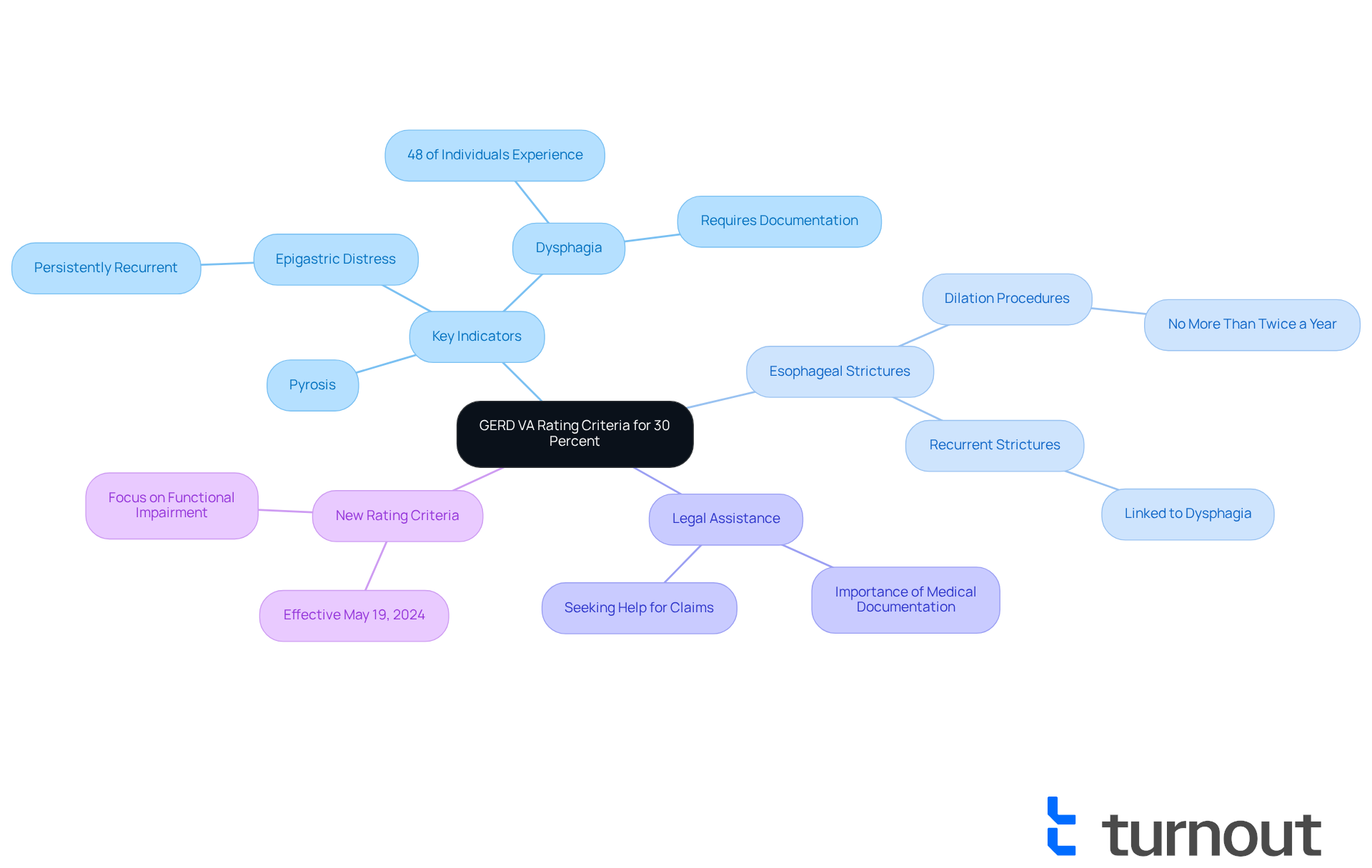
Common GERD Symptoms Affecting VA Ratings
We understand that dealing with GERD can be challenging, and it often brings symptoms like heartburn, regurgitation, chest pain, and difficulty swallowing. If you're experiencing these signs, it's important to carefully record how often they occur and their intensity. This information is vital when submitting your request for assistance. Additionally, chronic cough or hoarseness may also be relevant, particularly if they interfere with your daily activities. These symptoms can lead to increased anxiety and stress, complicating your health issues and potentially affecting the outcome of your VA claims.
Healthcare professionals recognize that these challenges can significantly impact your quality of life. The GERD VA rating 30 percent signifies that the disability rating for GERD ranges from 0% to 60%, depending on the severity of your symptoms and their effect on your daily activities. Remember, consistent and thorough documentation of your issues can strengthen your requests, potentially leading to GERD VA rating 30 percent and enhanced support for your needs.
To bolster your claims, we encourage you to keep a detailed record of your experiences. Note the duration, frequency, and specific triggers of your symptoms. Seeking help from knowledgeable supporters can also make a difference as you navigate the application process. You are not alone in this journey, and we're here to help you every step of the way.
Importance of Medical Documentation for GERD Claims
Medical documentation is vital when submitting a gastrointestinal reflux disorder request with the VA. We understand that this process can feel overwhelming, but gathering thorough records is essential. This includes your diagnoses, treatment plans, and pertinent test results. A comprehensive history of your GERD symptoms, treatments, and their effects on your daily life can significantly strengthen your case. In fact, veterans who provided detailed medical evidence in their applications reported higher success rates, with extensive documentation leading to a significant percentage of accepted requests. External sources also indicate that assertions backed by comprehensive medical records have a notably higher approval rate, underscoring the importance of thorough documentation.
Obtaining a Disability Benefits Questionnaire (DBQ) from a healthcare provider is equally crucial, as it provides the VA with necessary information to assess the severity of your condition. Veterans have shared positive experiences regarding the importance of keeping organized records. Maintaining a daily log of your issues can help document the condition's impact on your daily life. One veteran noted, 'Maintaining a daily record of my symptoms assisted me in expressing my difficulties throughout the application process.' This highlights the importance of personal documentation.
Moreover, incorporating lay statements from relatives or fellow service members can further support your assertions by offering personal accounts of how the condition impacts daily activities. These statements can provide important context and backing for your assertion, boosting its reliability.
Ultimately, ensuring your requests are supported by strong medical documentation, including private medical records and DBQs, greatly enhances your likelihood of obtaining a favorable VA disability rating, especially if you are aiming for a GERD VA rating of 30 percent for acid reflux. With the updated evaluation standards for gastroesophageal reflux disease introduced on May 19, 2024, presenting thorough evidence to back your assertions is increasingly crucial. Consider maintaining a daily journal of your symptoms to document the condition's impact on your daily life. Remember, you are not alone in this journey, and we're here to help you every step of the way.
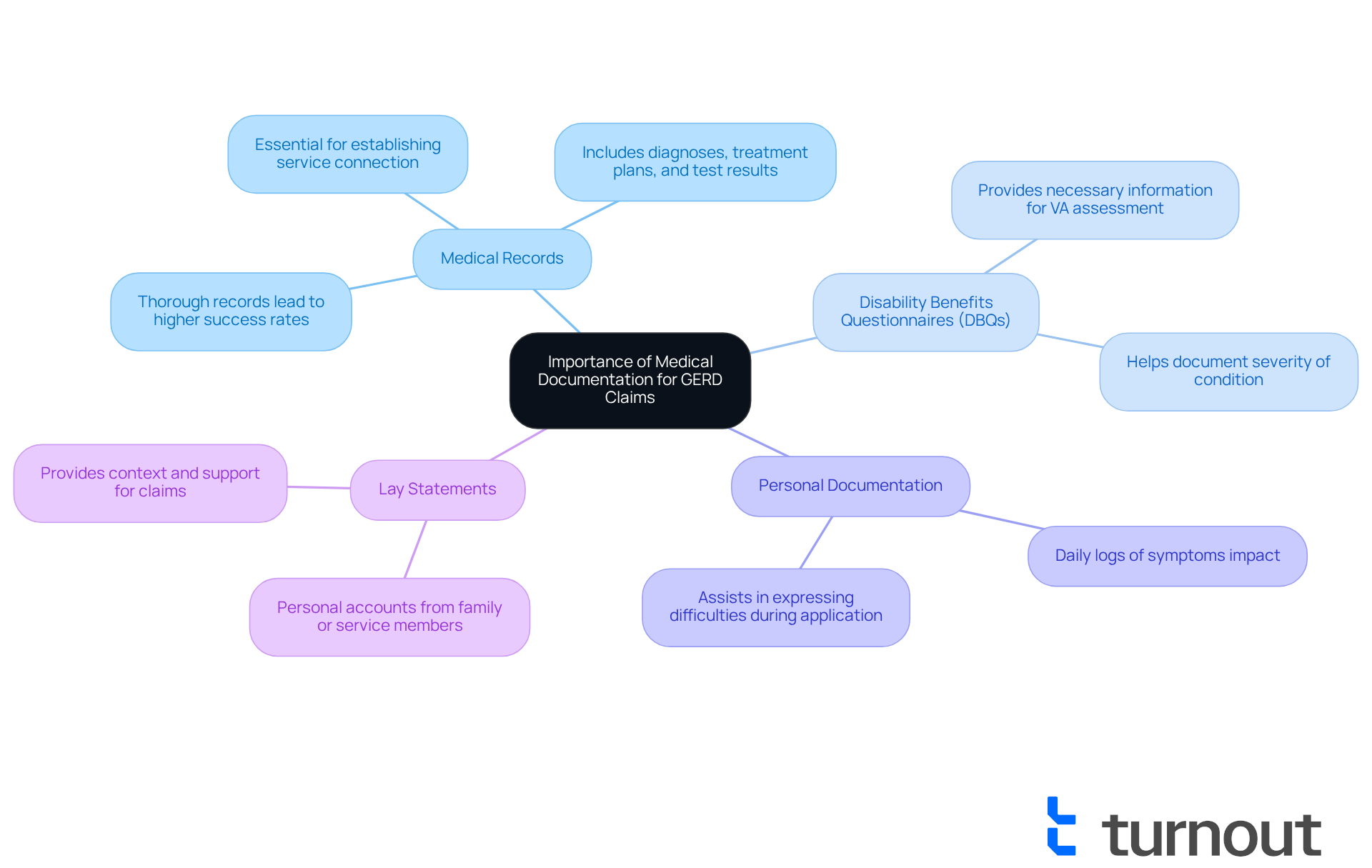
Appealing a Denied GERD VA Claim: Steps to Take
When a GERD VA request is rejected, we understand that this can be a frustrating experience for former service members. It's important to start by thoroughly examining the decision letter to pinpoint the exact reasons for the rejection. This understanding is crucial for formulating an effective appeal. The next step involves gathering additional evidence, which may include updated medical records, new statements from healthcare providers, and a medical nexus opinion that connects the condition to military service.
Submitting a Notice of Disagreement (NOD) is the initial official step in the appeals process, allowing you to convey your disagreement with the VA's decision. You are not alone in this journey; many veterans have faced similar challenges. You also have the option to request a Higher-Level Review, where a senior VA employee will reassess your request based on existing evidence. Alternatively, you can submit a Supplemental Request that includes new evidence to strengthen your case.
Data suggest that around 30% of former service members effectively contest rejected requests, which aligns with the gerd va rating 30 percent, by presenting robust, pertinent evidence. This highlights the significance of detailed documentation and perseverance in the appeals procedure. For instance, many individuals with military experience who have effectively gathered new evidence and articulated their claims have seen positive outcomes. This reinforces the notion that a well-prepared appeal can lead to a favorable resolution.
Additionally, if your appeal is taken to the Board of Veterans’ Appeals (BVA), you can submit new evidence. The potential outcomes include approval, denial, or remand, which emphasizes the importance of being well-prepared. Remember, we’re here to help you navigate this process and support you every step of the way.
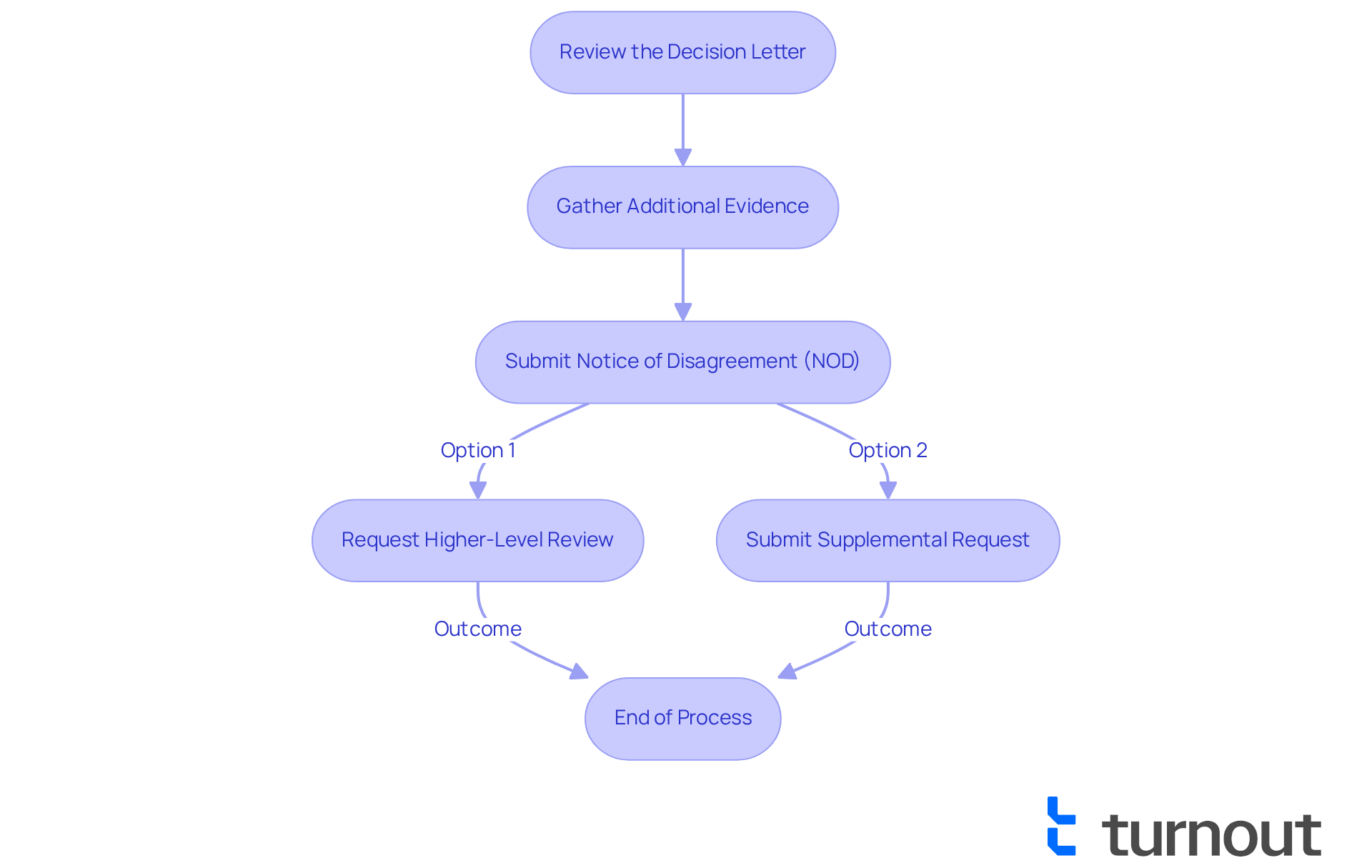
Secondary Conditions: Impact on GERD VA Ratings
Secondary conditions can significantly impact the gerd va rating 30 percent associated with gastroesophageal reflux disease. We understand that mental health challenges, such as anxiety, depression, and PTSD, often exacerbate digestive issues, which can lead to increased disability ratings. For instance, veterans with PTSD might experience heightened stomach acid production due to elevated stress levels, resulting in uncomfortable symptoms like heartburn and chest pain.
It's crucial to establish a secondary service connection for gastroesophageal reflux disease (gerd va rating 30 percent) by demonstrating that PTSD has caused or worsened the condition. Recording these secondary conditions and their effects is vital for creating a service connection and supporting a higher rating. Data indicates that individuals with a mental health diagnosis are twice as likely to receive a gastrointestinal illness diagnosis, underscoring the prevalence of acid reflux among this group.
Veterans are encouraged to present medical evidence linking their acid reflux to their mental health issues, particularly to support a gerd va rating 30 percent, as this can significantly strengthen their cases. One veteran shared, "The pressure from my condition aggravated my symptoms," highlighting the importance of thorough documentation during the application process. By clearly outlining how anxiety and PTSD affect their digestive issues, former service members can enhance their chances of obtaining the ratings and benefits they deserve.
To bolster their claims, former service members should comprehensively document their conditions, ensuring that all relevant details are included. Remember, you are not alone in this journey, and we’re here to help you navigate the process.
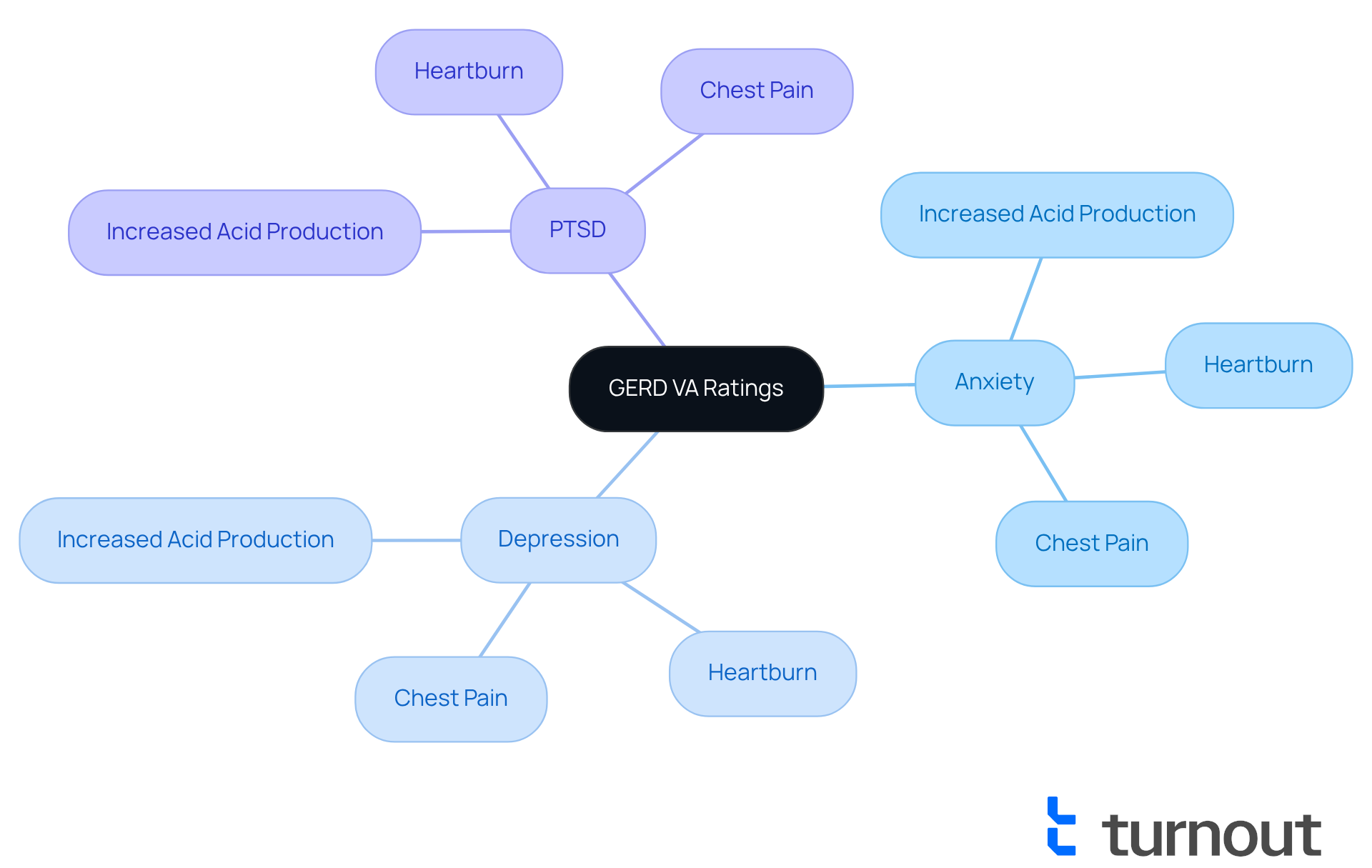
Strategies to Increase Your GERD VA Rating
Improving a GERD VA rating 30 percent for acid reflux can feel overwhelming, but you are not alone in this journey. It's essential for veterans to maintain comprehensive records of their conditions and treatment history. Keeping a detailed symptoms journal is crucial for tracking the frequency and intensity of episodes, as this can significantly strengthen your claims.
We understand how important it is to have clear support for your application. Obtaining a nexus letter from a qualified healthcare professional that connects GERD with your military service can greatly enhance your application. Statistics show that claims backed by well-crafted nexus letters have a higher success rate. Advocacy groups highlight that a strong nexus letter can dramatically increase the likelihood of VA claim approval.
Regular follow-ups with healthcare professionals to adjust treatment plans and document any changes in your condition are also beneficial. Many veterans, like Thomas D., who achieved a GERD VA rating 30 percent after facing multiple denials, emphasize the importance of thorough medical documentation and consistent symptom monitoring in their advocacy efforts.
Additionally, consider the possibility of secondary service connections for acid reflux, especially if you have other service-related conditions. This can broaden your perspective on your application. Remember, we’re here to help you through this process, and every step you take brings you closer to the support you deserve.
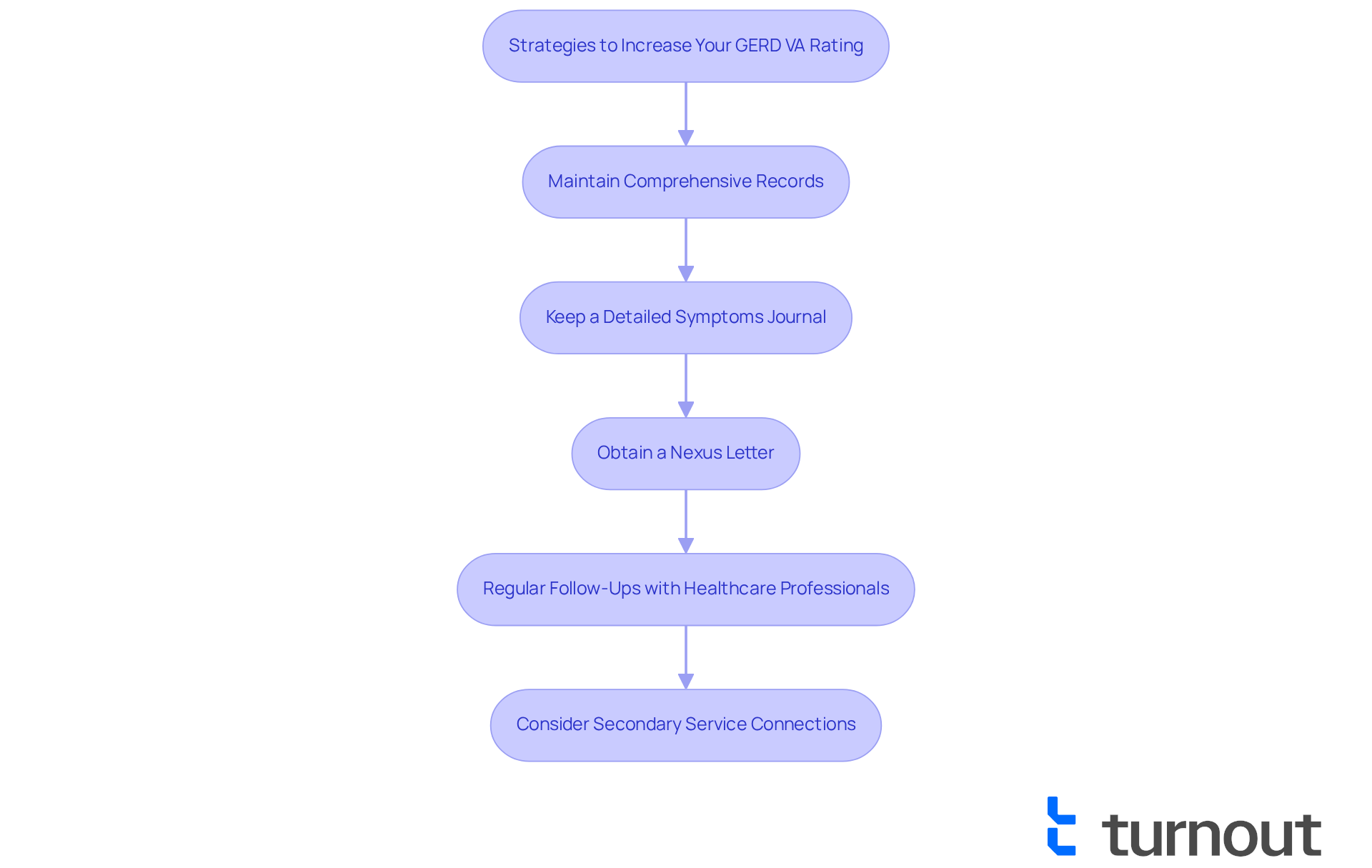
Timeline for VA Rating Decisions on GERD Claims
Navigating the timeline for GERD VA rating 30 percent decisions on applications can be daunting. We understand that this process can vary significantly, typically spanning from a few months to over a year. Several factors influence this timeline, such as the complexity of your request, the completeness of your submitted documentation, and the current backlog at the VA.
As of September 2025, the average time to receive a VA disability rating is approximately 125 calendar days from submission to decision. However, this average can fluctuate based on regional office workloads and the number of requests being processed. It’s common to feel overwhelmed by these uncertainties, but there are steps you can take to help expedite your claim.
We encourage you to submit Fully Developed Claims (FDCs) through VA.gov to accelerate the process. Additionally, verifying the status of your requests online through the 'My VA' dashboard can keep you informed. Staying proactive in addressing any inquiries for further information from the VA is crucial to avoid unnecessary delays.
Remember, keeping your statements straightforward by concentrating on 1-3 conditions can significantly improve the likelihood of a positive result. You're not alone in this journey; we’re here to help you every step of the way.
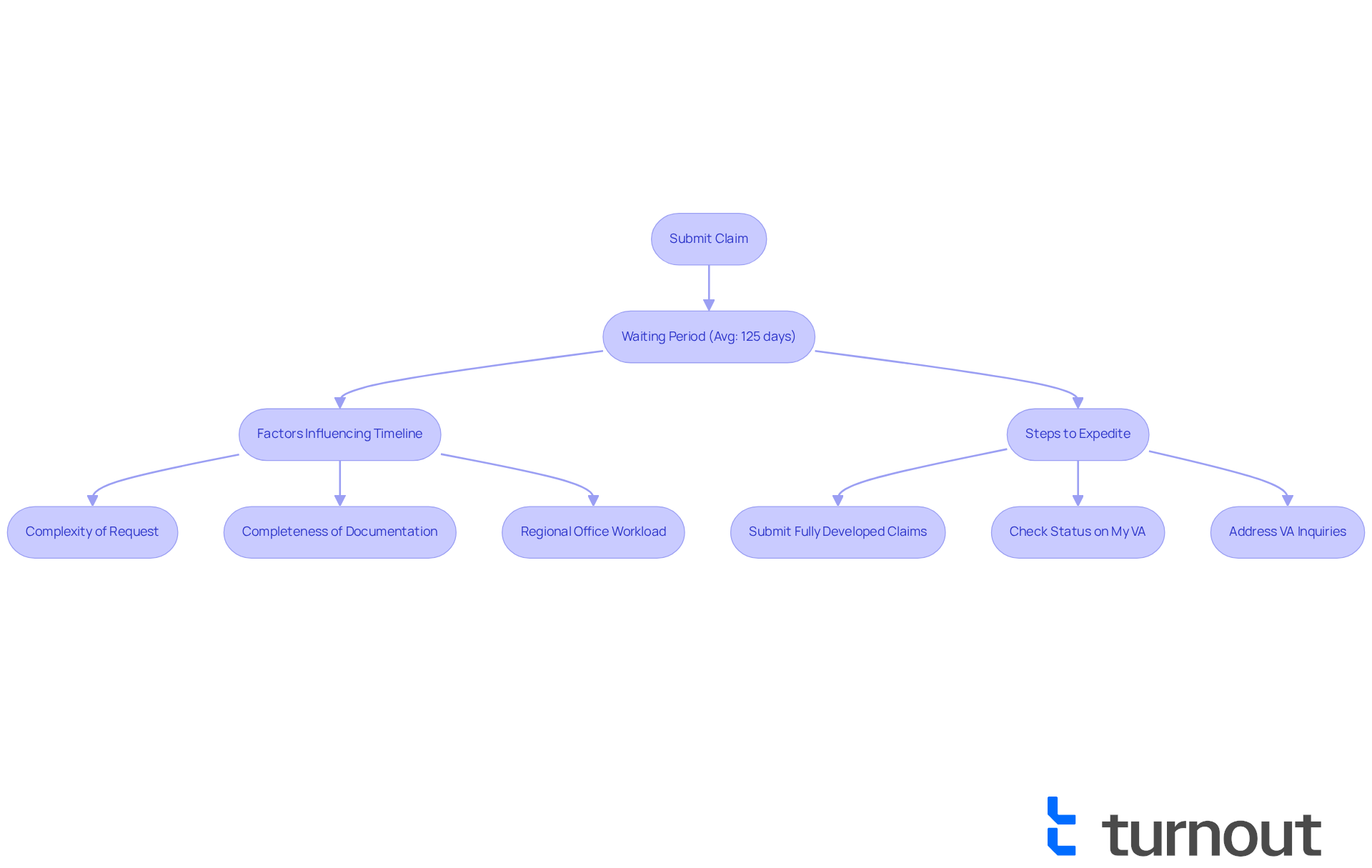
The Role of Legal Representation in GERD VA Claims
Navigating the VA application procedure can feel overwhelming, especially for service members dealing with challenges like the gerd va rating 30 percent. We understand that while some may attempt to manage their requests independently, seeking expert help can offer significant advantages. Specialists in VA processes are well-versed in the system's complexities and can guide veterans through the intricate details of documentation and submission. This support is invaluable, particularly for those facing complicated situations or who have previously experienced denial of requests.
Statistics show that claims with professional assistance enjoy a notably higher success rate. For instance, former service members who sought help reported a smoother process and better outcomes, with many successfully obtaining the benefits they deserved. One individual shared, 'Having someone who understands the system made all the difference.' They felt supported and informed every step of the way.
Moreover, experts can advocate for veterans during appeals, ensuring that their cases are presented effectively. This level of advocacy is crucial, especially when the stakes are high, such as securing benefits for debilitating conditions like the gerd va rating 30 percent. Another veteran remarked, 'I was overwhelmed by the paperwork and requirements.' With professional help, they finally felt like they had a fighting chance.
In summary, the benefits of professional assistance in VA claims are clear. From understanding the nuances of the process to enhancing the likelihood of approval, experienced individuals can greatly benefit from expert guidance in their pursuit of the support they need. Remember, you are not alone in this journey; we're here to help.
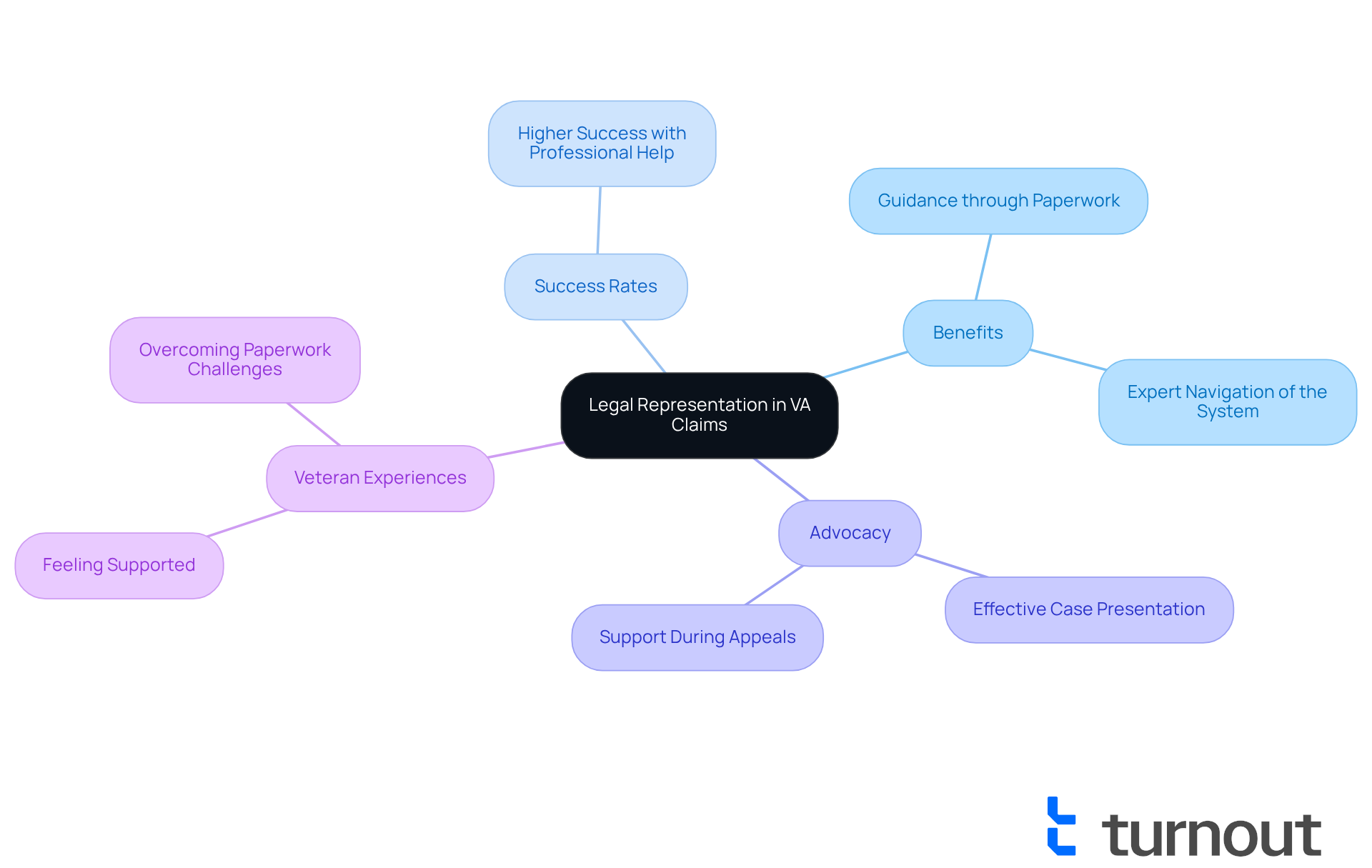
The Impact of GERD on Veterans' Lives and Benefits
Gastroesophageal reflux disease can profoundly impact the quality of life for former service members, affecting their ability to work, rest, and engage in daily activities. Many veterans report chronic pain, discomfort, and dietary restrictions, which can lead to emotional distress and a significant decline in overall well-being. Indeed, a considerable number of former military personnel express that their health has deteriorated due to gastrointestinal issues, highlighting the widespread effects of this condition.
We understand that veterans often face significant challenges in coping with acid reflux. Many share how their discomfort disrupts daily routines and limits their participation in social activities. One veteran expressed, "Living with this condition has made it challenging to enjoy meals with family and friends, as I am always anxious about my issues." This sentiment resonates with many who find that GERD not only affects their physical health but also their emotional state.
To achieve a GERD VA rating of 30 percent, individuals must demonstrate daily episodes of symptoms or uncontrolled symptoms despite medication. This requirement is crucial for veterans seeking to understand how to qualify for benefits such as GERD VA rating 30 percent. Accessing appropriate VA benefits is essential for former service members to obtain necessary treatments and support. Turnout, which is not a legal practice, offers valuable assistance in navigating these complex processes. They help individuals understand their options for SSD claims and tax relief without needing legal representation. These benefits can significantly enhance their quality of life, enabling them to manage their condition more effectively and regain a sense of normalcy.
It's important to note that the updated rating criteria complicate the process for former service members to achieve ratings above 0% without documented esophageal stricture. This change has a considerable impact on many who have served. By addressing the challenges posed by GERD, veterans can work towards a healthier and more fulfilling existence. Remember, you are not alone in this journey—we're here to help you navigate these challenges together.
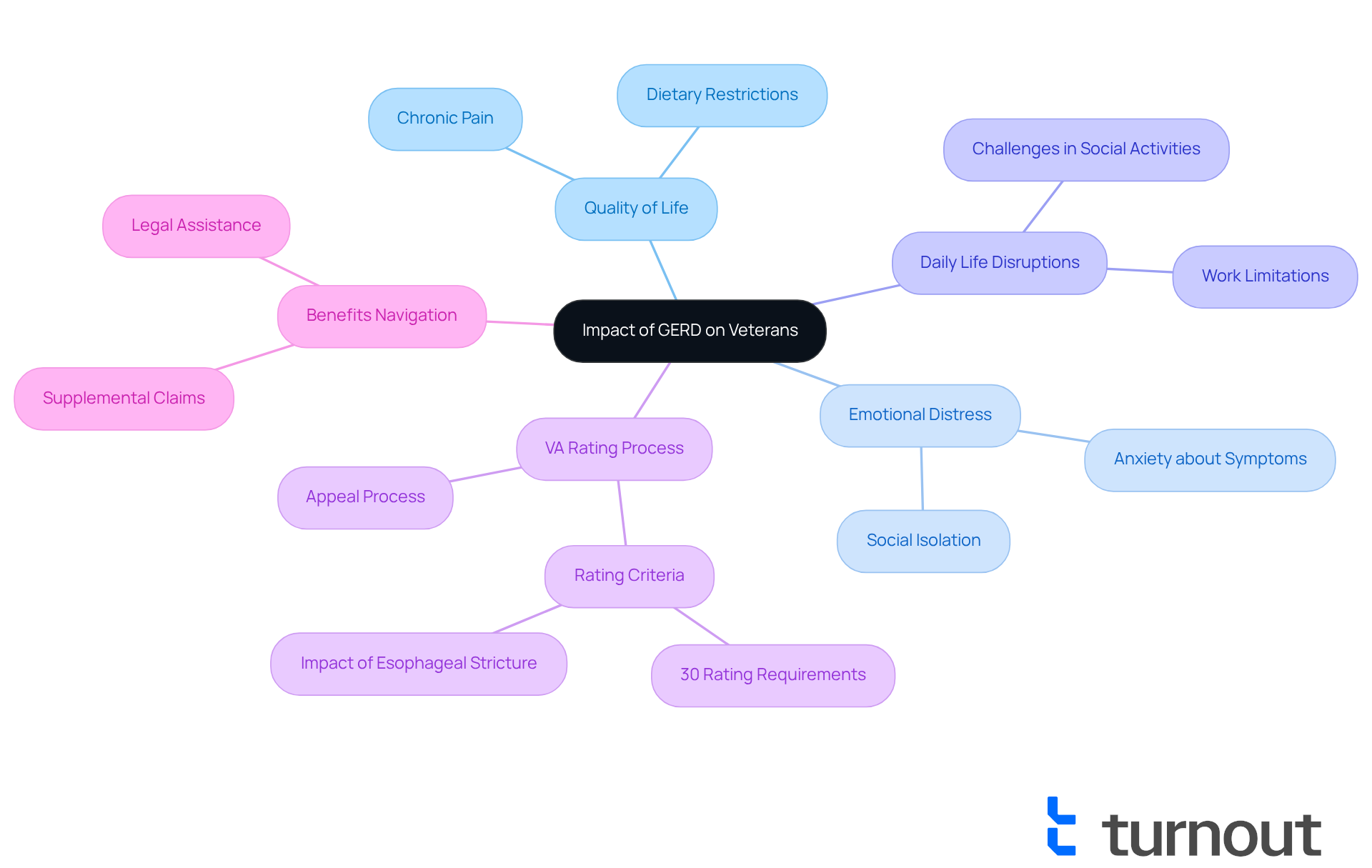
Conclusion
Navigating the complexities of obtaining a GERD VA rating of 30 percent can feel overwhelming for veterans. We understand that this journey is not easy, and grasping the intricacies of the process is essential for securing the benefits you deserve. This article highlights the importance of proper documentation, the impact of symptoms on daily life, and how technology and legal representation can help streamline the claims process. By equipping veterans with the necessary knowledge and resources, it becomes possible to navigate the VA system more effectively.
Key insights include:
- The significance of maintaining thorough medical records
- Understanding the specific criteria for GERD ratings
- Recognizing how secondary conditions can influence overall health and benefits
It's vital to advocate for yourself—whether through detailed symptom tracking or seeking support from professionals who specialize in VA claims. This proactive approach can lead to improved outcomes and a greater quality of life.
In conclusion, the journey to obtaining a GERD VA rating of 30 percent is one that veterans should not face alone. By leveraging available resources, including technology and expert guidance, former service members can enhance their understanding of the process and increase their chances of success. Remember, you have the power to take action, stay informed, and utilize the support systems in place to ensure you receive the benefits you have earned and deserve. You are not alone in this journey; we are here to help.
Frequently Asked Questions
What is the purpose of Turnout in the GERD VA rating process?
Turnout helps streamline the GERD VA rating process by using AI technology to simplify the application and appeals process, providing veterans with timely updates and comprehensive support.
How has AI impacted the processing time for VA disability applications?
As of August 2025, the average processing time for all disability applications has decreased to 94.8 days, which is 17.8% faster than the previous year. The VA processed over 2.524 million claims in fiscal year 2025.
What qualifications are needed for a GERD VA rating of 30 percent?
To qualify for a GERD VA rating of 30 percent, individuals must exhibit persistently recurrent epigastric distress, dysphagia (difficulty swallowing), and pyrosis (heartburn). Additionally, having esophageal strictures requiring dilation procedures no more than twice a year can support the rating.
What common symptoms should veterans document when applying for GERD VA ratings?
Veterans should document symptoms such as heartburn, regurgitation, chest pain, difficulty swallowing, chronic cough, and hoarseness, including their frequency and intensity, as these can affect their VA claims.
Why is thorough medical documentation important for GERD VA ratings?
Thorough medical documentation is crucial as it supports claims and illustrates how acid reflux impacts daily life, which is essential for the VA's assessment of functional limitations caused by the condition.
What should veterans do if they struggle with their GERD VA rating application?
Veterans who struggle with their application are encouraged to seek assistance regarding their options for contesting rejections or obtaining legal support, as they are not alone in this process.
How can veterans improve their chances of receiving a GERD VA rating of 30 percent?
Veterans can improve their chances by keeping a detailed record of their symptoms, including duration, frequency, and triggers, and seeking help from knowledgeable supporters during the application process.




